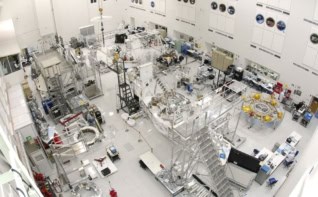The UK science budget is set to increase by 24% over the next three years. However, the two bodies that fund the bulk of physics research in British universities - the Particle Physics and Astronomy Research Council (PPARC) and the Engineering and Physical Sciences Research Council (EPSRC) - will have to make do with increases of 5% and 11% respectively. The UK's other four research councils receive increases in the range 9% to 15%. The extra money was available as a result of the government's comprehensive spending review earlier this year.
Most of the extra money – £300m over three years – will go on a £600m Joint Infrastructure Fund that the government is setting up with the Wellcome Trust, the world’s largest biomedical research charity. The Wellcome Trust has also promised £110m towards the cost of a synchrotron radiation source called DIAMOND, and the government is chipping in another £35m in the next three years. DIAMOND is also the first central facility to have its own line in the science budget. The government has also earmarked £15m in both 2000 and 2001 to cover currency fluctuations in the cost of the UK’s subscription to international organizations such as CERN and the European Space Agency.
“The overall allocation is designed to be a balanced package with particular attention to boosting postgraduate and post-doctoral training and development, plus high priority areas, while still maintaining the underlying scientific disciplines across the sectors, ” said Lord Sainsbury, the UK’s science minister earlier today.
“The main advantage of today’s announcement to the research councils is that we can plan three years ahead, ” said Steve Mee, a spokesperson for PPARC. However, today’s figures do not include any details on which type of science laboratories will be refurbished first through the new £600 m DTI Welcome Trust infrastructure fund.
Ian Halliday, chief executive of PPARC, said that “compared to the decline we previously faced, we shall be able to maintain in real terms the level of our university research activity.” He added that PPARC intended to use some of its money to develop new support programmes for young and mid-career scientists who want to carry out “risky” research.



